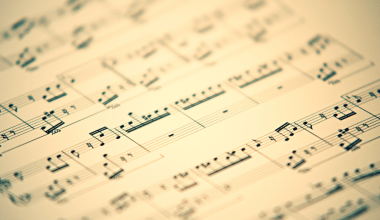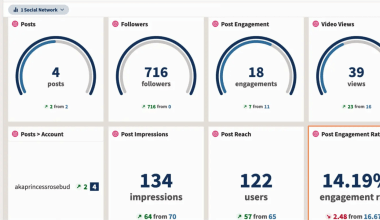The pop songs chart is like a scoreboard for music. It tells us which songs people love the most. These charts track the popularity of songs based on how often people play them on the radio, buy them, or stream them online.
For decades, the pop songs chart has been a fun way for fans to follow their favorite artists and for new musicians to make a name for themselves. But how does it work? And why does it matter so much? Let’s find out!
How Does the Pop Songs Chart Work?
Pop charts aren’t random. They follow a system to figure out which songs are trending. Here’s how it works today:
- Radio Play: Stations report how often they play a song.
- Sales: Physical copies (like CDs or vinyl) and digital downloads count.
- Streaming: Apps like Spotify, Apple Music, and YouTube track how often songs are played.
- Social Media Buzz: Songs that go viral on platforms like TikTok can climb the charts quickly.
Every week, the data is collected, and the songs are ranked from most popular to least. The top spot is what every artist dreams of!
Why Is the Pop Songs Chart So Important?
The pop songs chart is important for both fans and musicians. For fans, it’s a way to keep up with what’s trending. For artists, it’s like winning a trophy! Being on the chart means your music is reaching millions of people.
For example:
- Recognition: Chart-topping songs get more attention, leading to award nominations and media coverage.
- Career Growth: It opens doors for artists to work with big brands, collaborate with famous musicians, and book more gigs.
- Global Reach: Charts help artists become known worldwide.
A Short History of the Pop Songs Chart
Let’s take a trip back in time to see how it all began.
- The Early Days: In the 1930s and 1940s, music popularity was tracked by counting sheet music sales.
- Billboard Hot 100: In 1958, the Billboard Hot 100 was launched. It combined radio play and sales to rank songs.
- Digital Era: With streaming platforms like Spotify and YouTube, today’s charts focus more on streams than sales.
Each era of the pop songs chart reflects how people enjoyed music at that time.
What Makes a Song Hit the Charts?
Not every song becomes a hit. Songs that make it to the pop songs chart usually have these things in common:
- Catchy Tunes: Songs with memorable hooks stick in people’s minds.
- Relatable Lyrics: People connect with songs that tell a story or match their feelings.
- Strong Marketing: Good promotion helps songs get noticed.
- Fan Support: Loyal fans play a huge role by streaming and sharing songs.
Famous Songs That Dominated the Charts
Here are a few songs that not only hit the top of the charts but also became timeless classics:
- “Billie Jean” by Michael Jackson
- “Someone Like You” by Adele
- “Shape of You” by Ed Sheeran
- “Blinding Lights” by The Weeknd
These songs captured hearts with their unique sounds and relatable lyrics.
How the Pop Songs Chart Has Changed Over the Years
1. From Radio to Streams
In the past, radio play was the king. Today, streaming platforms like Spotify, YouTube, and Apple Music lead the way.
2. Global Influence
Earlier, charts were dominated by English songs. Now, artists like BTS and Bad Bunny are showing that music is a universal language.
TikTok challenges, Instagram Reels, and viral trends play a big role in pushing songs up the charts.
Tips for Artists: How to Get Your Song on the Pop Songs Chart
- Focus on Quality: A well-produced song is more likely to attract listeners.
- Leverage Social Media: Share snippets of your song on TikTok, Instagram, and YouTube.
- Pitch to Playlists: Submit your tracks to Spotify playlists for more visibility.
- Engage with Fans: Reply to comments, host live sessions, and share behind-the-scenes content.
- Collaborate: Partner with influencers and other artists to widen your audience.
Trends in Pop Music That Impact Charts
- Genre Blending: Modern hits often mix pop with hip-hop, R&B, or electronic music.
- Shorter Songs: Tracks under 3 minutes perform better because of shorter attention spans.
- DIY Artists: Independent musicians are finding success without major labels.
Why Some Songs Stay on the Charts Longer
Some songs remain popular for weeks, while others disappear quickly. Why?
- Universal Appeal: Songs that appeal to all age groups and cultures last longer.
- Repeat Value: Tracks with catchy beats and lyrics are played over and over.
- Strategic Releases: Timing matters! Artists release songs during holidays or big events for maximum impact.
Fun Facts About the Pop Songs Chart
- The longest-running #1 hit on the Billboard Hot 100 is “Old Town Road” by Lil Nas X, which stayed on top for 19 weeks.
- “White Christmas” by Bing Crosby is the best-selling single of all time, with over 50 million copies sold.
The Future of the Pop Songs Chart
What will the pop songs chart look like in the future? Here’s what experts predict:
- AI and Data: Artificial intelligence might help predict which songs will become hits.
- Virtual Concerts: Streaming live shows could influence chart rankings.
- Fan Power: Fans might have more direct ways to support their favorite artists.
Final Thoughts: Why We Love the Pop Songs Chart
The pop songs chart is more than just a list of popular songs. It’s a snapshot of what people are feeling, dancing to, and enjoying at any given moment. For artists, it’s a dream to see their work recognized. For fans, it’s a way to connect with the music they love.
If you’re an artist, the journey to the charts starts with great music, hard work, and a strong connection with your fans. Keep creating, keep sharing, and who knows? Your song might be the next big hit!
Related Articles:
For further reading, explore these related articles:
- Top 10 Rappers in the World Who Inspire and Entertain
- Top 100 Songs Worldwide: A Journey Through the Best Music Ever
For additional resources on music marketing and distribution, visit Deliver My Tune.






